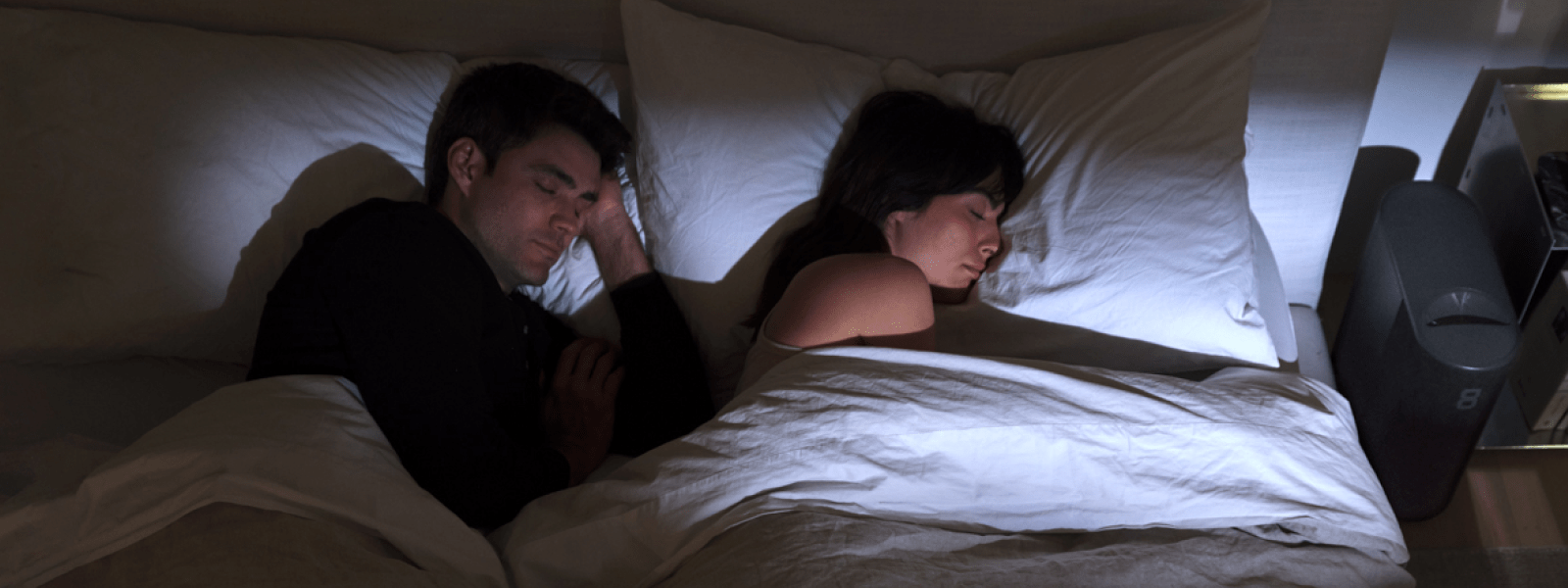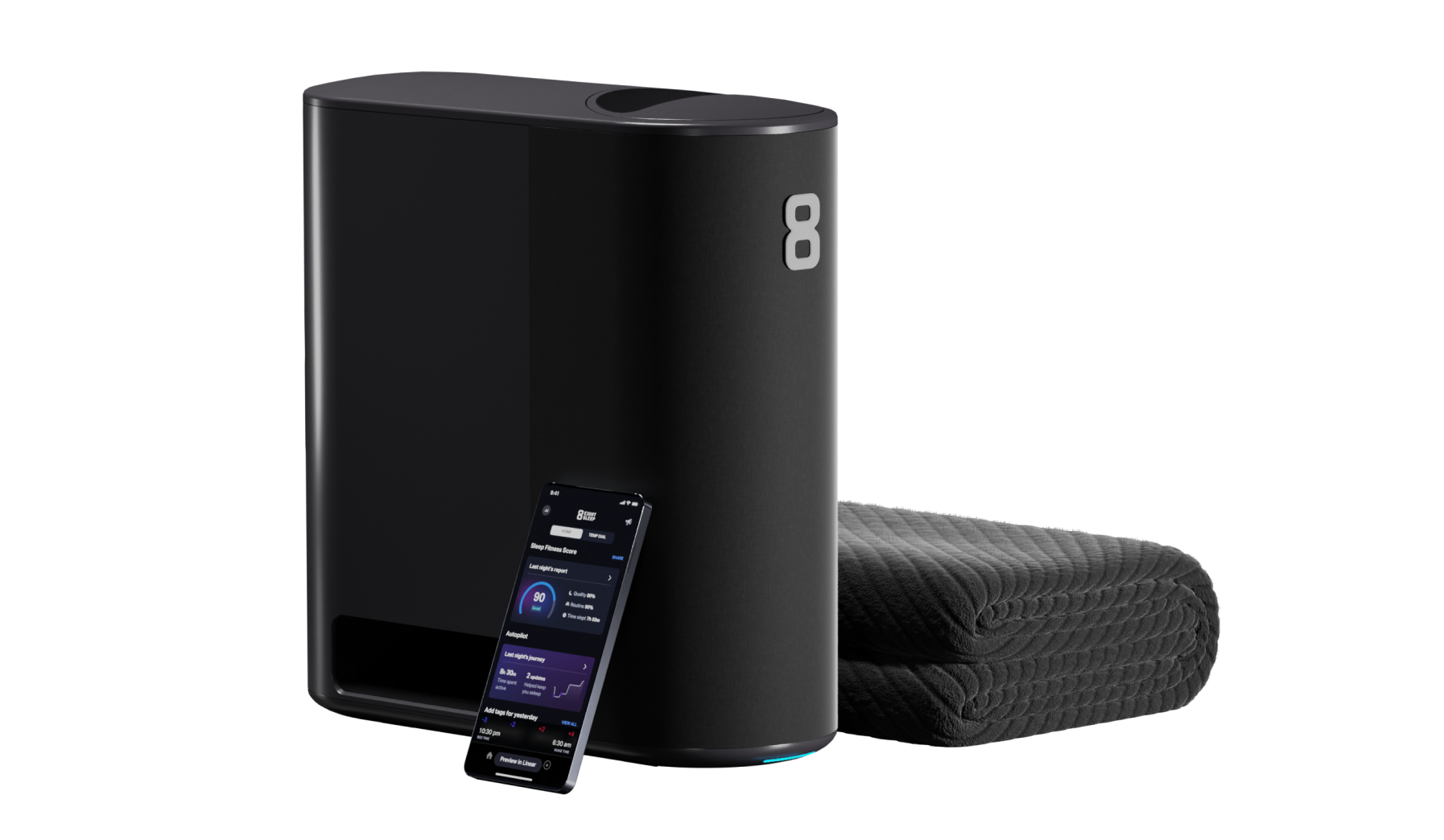We all know the feeling of tucking ourselves into bed only to begin tossing and turning in heat-induced discomfort. At other times, we’ve cozied up under the sheets, quickly realizing that three blankets simply do not provide enough warmth to keep the shivers away. So, it’s no surprise that temperature significantly impacts our sleep quality—but how? And knowing how important temperature is, what is the optimal temperature to ensure a good night’s rest? What is the best way to regulate temperature throughout the night?
These are worthwhile questions, but the answers are not one-size-fits-all. We are all unique individuals, and our body temperature setpoints vary. An Eight Sleep clinical trial revealed that while men and women prefer similar skin temperatures during sleep, natural differences in metabolism call for different bed climates to achieve desirable skin temperatures. Still, research shows that our baseline temperatures decline as we fall into a deep sleep and rise as we approach wakefulness. So, adjusting our sleep temperature to a cooler setting to meet our bodies’ built-in needs is an essential step to improving sleep quality, which is vital to improving overall health.
The Relationship Between Sleeping Cold and Sleep Quality
The connection between temperature and sleep is multifaceted, and the two are interdependent. Our bodies have a built-in system called thermoregulation that involuntarily regulates our temperature. Simultaneously, our sleep patterns are controlled by our circadian rhythm — a natural biological clock that regulates our sleep and wake periods in a 24-hour cycle.
How Our Temperature Changes During Sleep
According to sleep and neuroscientist Matt Walker, as we enter our nocturnal sleep phase, our body temperature naturally decreases about two to three degrees Fº. This drop in temperature sets the tone for relaxation and comfortability, which, in turn, aids in falling asleep faster. After sleep onset, our body temperatures continue to decrease and fluctuate throughout the night. Then, as we approach our wake phase, our inner temperature gradually increases, signaling our body that it’s time to wake up and start the day. So, being able to adjust our physiological and environmental temperatures throughout the night further supports our bodies’ innate circadian response, resulting in more restful sleep and refreshing wakefulness.
This link between sleep and thermoregulation, particularly sleeping cold, leads to the thermal environment being one of the most important factors that impacts sleep.
Sleeping Cold vs. Sleeping Warm
Still, there is a time for our sleeping environment to be warmer and a time for it to be cooler. First and foremost, comfortability is key. Many factors come into play when deciding on the right temperature, and biology is one of them. Our core body temperatures reside at or close to 98.6 degrees F. However, research indicates that women naturally tend to have a warmer core temperature than men by about 0.4 degrees F.
Further, women’s hands are often significantly colder by about 7 degrees Fº. Since temperature perception begins with the extremities, women tend to feel colder than men (cue the “aha” moment from the men whose partners’ freezing feet constantly find their way to their warm side of the bed). Additionally, body composition also affects our inner temperature. Generally speaking, men have more lean muscle and less body fat than women, which keeps them feeling warmer.
But aside from sheer comfort, warm and cold temperatures impact our ability to sleep, depending on how they align with our circadian rhythms. As mentioned, colder temperatures are associated with setting the body into sleep mode. Trying to sleep in a room that is too warm may prolong the onset of sleep, decreasing your overall sleep quality. On the other hand, slightly warmer temperatures upon waking promote a natural sense of energy and alertness to help us take on the day.
So, our temperature settings should change throughout our sleep period. But in general, a colder room encourages higher quality sleep, which enhances the energy boost from a warmer awakening.
How cold should my bedroom be to sleep?
Knowing that a cold room helps with a better night’s rest, what is the ideal temperature for sleep? We have found that a range of 60-68 degrees F is typically most comfortable while promoting great sleep. Of course, the perfect setting changes from person to person, but 68 degrees F is an excellent place to start.
3 Benefits of a Cooling Mattress
You may think that sleeping temperature regulation is complicated or nearly impossible. After all, we can’t adjust the temperature of our environment while we’re asleep—or can we? With the Eight Sleep Pod, our smart technology takes care of all the temperature adjustments—and so much more—for you. Plus, you can place it right atop your existing mattress, with no hassle.
1. Fall Asleep Faster
Eight Sleep clinical studies show that members fall asleep 44% faster when sleeping on the Pod. Because of the Pod’s ability to compile your sleep history and patterns, it automatically adjusts to your perfect temperature to help you fall asleep and stay asleep. Plus, the Pod adjusts both sides of the bed independently, creating the perfect sleep environment for both you and your partner.
2. Increased Deep Sleep
Deep sleep is a critical stage during which we begin to log new information into our long-term memory, heal any tissue damage, and strengthen our immune system. Inadequate deep sleep may result in grogginess, impaired memory, and health risks (e.g., poor insulin sensitivity). As the Pod learns your thermal preferences and adjusts accordingly, your bed will be set at the perfect temperature to keep you in the deep sleep stage.
3. Increased REM Sleep
The REM stage follows deep sleep and is just as essential for feeling well-rested. During REM, our brains further consolidate and process information into our long-term memory while promoting mood regulation and mental concentration among other processes. So, when REM is disrupted, we risk exhaustion, altered pain perception, and inhibiting new cell growth. And unsurprisingly, thermal discomfort is often the culprit for sleep interruptions. However, the Pod reduces interruptions by 23%, ensuring a more effective night of rest so you wake up feeling your best. And for those who aren’t in the market for a new mattress, the Pod 3 Cover, our cooling mattress cover, is another excellent option for sleep temperature regulation.
Key Takeaways
Most people don’t place enough emphasis on the effect temperature has on sleep quality, but the positive outcomes are significant when we do. The benefits of matching your sleeping temperature to your body’s natural sleep-wake cycle are copious. While a warmer temperature is beneficial when waking up, sleeping cold helps you consistently sleep better throughout the night, giving you long-lasting energy throughout the day. The Pod is the perfect tool to ensure high-quality sleep.
Are you ready to experience the power of temperature control to enhance your sleep quality? Check out our Pod Intelligent Cooling and Heating Mattress to begin your life-changing transformation.
Written by Angel and edited by Carley with Move to Root


